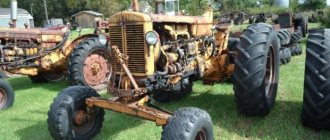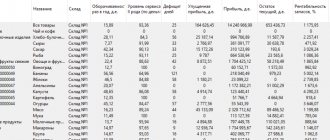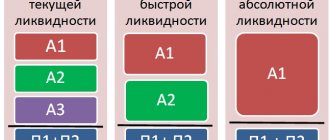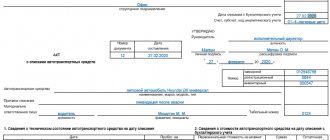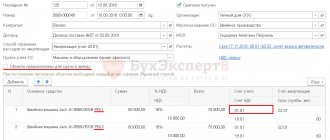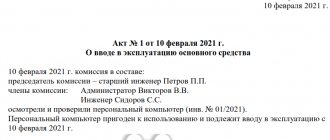Fixed assets are one type of productive assets. Unlike revolving ones, they do not change their shape, but with each cycle they become more and more destroyed. There are a number of indicators, the calculation of which helps determine their technical safety. The depreciation and serviceability coefficient of fixed assets is an indicator of the technical safety of funds. However, you need to understand that it is quite conditional in nature. It is affected by inflation rates and market price fluctuations. Therefore, the serviceability coefficient of fixed assets, the formula of which will be discussed below, does not always adequately reflect the state of the operating capacities of the enterprise.
Classification in the balance sheet
The following categories of fixed assets are distinguished:
- Buildings and structures (workshops, warehouses, laboratories, engineering and construction facilities).
- On-farm roads, electrical and heating networks.
- Vehicles.
- Equipment, working machines, control devices and computer technology.
- Special tool.
- Various equipment.
- Perennial crops and livestock used in the production process or transportation of finished products.
- Library and museum collections.
Attrition rate analysis
This indicator is calculated both for the business as a whole and for individual categories of fixed assets. Its value is considered in dynamics and in comparison with average data for the industry or for similar enterprises. The larger it is, the faster the rate at which fixed assets are retired for the company or for the group of objects under consideration.
However, the retirement rate itself, even taken over time, does not provide complete information about the movement of fixed assets. To get a complete picture, it must be compared with the renewal coefficient (Ko):
Ko = OSp / OSkp, where
Osp – the total initial cost of fixed assets received during the period,
OSKP – total cost of objects at the end of the period.
If the retirement rate is greater than the renewal rate, this means that for a given enterprise (group of fixed assets), the rate of retirement of fixed assets exceeds the rate of their receipt.
The opposite situation - the excess of Ko over Kv indicates an increase in the value of fixed assets for a given group or for the company as a whole. This ratio is generally considered positive, because talks about modernizing equipment and expanding production.
However, one should not assume that the excess of disposal of fixed assets over renewal is always negative for the company. An enterprise can, for example, outsource part of its production processes or abandon activities that do not generate profit. In this case, an increase in the retirement rate may well be combined with an improvement in the financial performance of the business as a whole.
Differences from current assets
In accordance with the Accounting Regulations, fixed assets meet the following conditions:
- Intended for use in the production process, management needs, provision to third parties for a fee for temporary use or possession.
- Their operational life is more than twelve months (one operating cycle of the enterprise).
- Not intended for subsequent resale.
- Capable of generating income or other economic benefits to the enterprise in the future.
It is important to distinguish working capital from capital assets. These include raw materials, auxiliary materials, and fuel. All of them are used during one operating cycle.
Fixed assets and working capital
The concept of fixed assets includes means of labor that are used over a long period or even constantly (repeatedly) for the creation of goods, trading activities and the production of services. Their signs:
- Long term operation with repeated participation in the process of making a profit.
- However, they do not change their real expression.
- As they wear out, they redirect their value to the products produced through them and thereby compensate for it through depreciation.
The value expression of fixed assets is fixed assets that have the same properties as their main aspect.
Part of the fixed assets removed from the real activities of the company and intended for their conversion into financial assets (that is, sale), with further use for the needs of the company, are called working capital. Their specificity is that they operate for a short production or economic period (no more than a year).
Basics of enterprise functioning
The main goal of any business entity is to increase its own profitability. And for this it is necessary to increase productivity, in particular the efficiency of using available funds. In order to determine the financial condition of an enterprise and its competitiveness, you need to be able to calculate analytical indicators. Calculating the serviceability coefficient of fixed assets helps determine the degree of wear and tear of production facilities. This is one of the basic indicators, so let's look at it in more detail.
Serviceability coefficient of fixed assets: calculation formula
To calculate this indicator, we need to know three cost values. The serviceability ratio of fixed assets is calculated in three ways:
- Kg = (St0 – I) / St0. In this formula, St0 is the initial cost, I is depreciation, and Kg is the serviceability coefficient of fixed assets.
- Kg = St1 / St0. As in the previous formula, Kg is the serviceability coefficient of fixed assets, but St1 represents the residual value of assets.
- Kg = 1 – Ci. The serviceability coefficient of fixed assets and the indicator of their wear and tear (Ki) in total are always equal to one, hence the third formula.
Thus, this indicator in the most general case can be considered as a multiple of dividing the residual value by the initial cost, which differ by the value of equipment wear and tear.
Features of calculating the depreciation rate of fixed assets
Fixed means of production are a necessary component of the activities of any enterprise. The production performance of the organization depends on the condition of fixed assets and the level of their productivity. To analyze the condition of fixed assets, the depreciation coefficient is used. Today we will talk in the article about what the depreciation rate of fixed assets means, how to calculate it, what standards are established for it, and we will also tell you what analytical data can be obtained based on the depreciation rate of fixed assets.
General information on fixed assets
In the process of conducting business, all business entities use fixed assets (fixed assets). The number of fixed assets and their cost depends on the specifics of the enterprise, production volume, field of activity, etc. Read also the article: → “Depreciation of fixed assets: types, calculation features, use in management.” Fixed assets include not only equipment that is directly involved in the production process, but also:
- buildings, premises housing production workshops, offices, retail outlets, etc., that is, real estate used for the production and sale of goods, work and services;
- transport and other movable property that is used for production purposes;
- furniture, computer equipment and other property necessary to support the production process.
Fixed assets recorded on the balance sheet of an enterprise are subject to depreciation. As a result of monthly deductions, part of the cost of the equipment is written off as depreciation, so the balance sheet reflects the residual (real) value of the property based on the period of its use.
What is wear coefficient and what does it show?
In order to determine the degree of depreciation of production assets, a coefficient is used, which is defined as the ratio of the amount of accrued depreciation to the original cost of the property.
Norm and meaning
The serviceability coefficient of fixed assets shows the degree of wear and tear of the operating capacities of the enterprise. The smaller it is, the more equipment is subject to write-off. The serviceability coefficient of fixed assets, the calculation formula for which was discussed above, cannot be more than 0.5. A value that exceeds this indicator indicates significant obsolescence of technical assets. It is unlikely that the enterprise will be able to function for a long time with this state of affairs.
OS coefficients
When analyzing the movement of the OS, it will help to assess the condition of the equipment, the correctness and efficiency of its use, and the need for replenishment. Analyzing the situation with the OS you can understand:
- The degree of their deterioration and suitability for fulfilling the production or commercial challenges facing the company.
- The number of retired and newly arrived equipment and their percentage.
- OS update intensity.
- How actively working equipment exceeds idle equipment.
The tool for this kind of research is the coefficients of movement of fixed assets of the company introduced into the analysis methodology.
Fixed and working capital of the enterprise, their concept and relationship are described in this video:
Fixed asset serviceability ratio
This coefficient shows the technical condition and physical wear and tear of the company’s property. This is the ratio of the residual score to the original score. Therefore, a higher numerical expression of the coefficient means a better state of the OS. Its critical value is 0.5, when the indicator falls below which, the question of replacing the means of production arises. The CG is calculated for each reporting number and compared with the previous calculation.
Two formulas are used for calculation:
- Direct calculation: KG = Residual value of fixed assets/Initial cost.
- Through the wear coefficient (if known): KG = 1 – (Wear coefficient).
Peculiarities:
- Determines the financial condition of the company. The larger it is, the less money needs to be invested in equipment.
- Its accuracy is influenced by the correctness of determining the maximum period of possible operation of the object, and, consequently, the period of depreciation and the amount of monthly payments.
Growth
This coefficient shows the dynamics of growth and renewal of OS and is considered as the ratio of the difference between the assessment of arriving and departing OS to their overall assessment. When determining it, sources of replenishment are taken into account due to:
- Purchases.
- Rentals.
- Created on your own.
- Receiving as a gift.
- Exchanges.
- Contribution to the management company.
- Privatization.
- Transfers.
And departures for reasons:
- Depreciation write-offs.
- Sales, donations, exchanges.
- Transfers.
- Theft or destruction.
Formula for calculating CP (calculation is carried out for the reporting period): CP = (Cost of incoming fixed assets – Cost of retired fixed assets) / Total cost of all fixed assets at the end of the period.
Peculiarities:
- The calculation shows that the higher the KP value, the more actively fixed assets are updated.
- But even a high indicator does not work without a quality assessment of the update. That is, we need to understand whether the renewal of means of production has affected the increase in business volumes.
Depreciation of funds
Working capital immediately transfers expenses for its purchase to finished products produced by the enterprise. Fixed assets also affect the price of manufactured goods, but indirectly. Depreciation in accounting is a procedure for transferring the cost of funds to the price of manufactured products as they wear out (moral and physical). Its norm is a set annual percentage of compensation for obsolescence of funds.
Depreciation methods
- Linear accrual. When using it, depreciation is charged evenly over the life of the assets. The current value is equal to the difference between the original price and the amount of accruals already made on the asset.
- Reducing balance method. When using this method, depreciation is charged unevenly. It is equal to a certain percentage of the residual value.
- Proportional method. In this case, depreciation charges are determined in accordance with some indicator (the time of use of equipment in the production process).
- Depreciation of funds in accordance with their useful life.
Depreciation of funds and its types. Indicators of technical condition and movement of fixed assets
Let's talk about indicators of the technical condition and movement of fixed assets. To begin with, what is wear and tear in principle?
Wear and tear is a reduction in the productive life of assets, their gradual loss of value, natural aging under the influence of time and the environment.
A distinction is made between physical and obsolete depreciation of fixed assets.
Physical wear and tear of fixed assets refers to the deterioration of physical condition, operational properties and a decrease in value caused by the natural wear and tear of assets.
Physical wear and tear is characterized by a standard service life (useful life), that is, the average duration of possible operation in years. The useful life is determined depending on the influence of factors such as load intensity, atmospheric and climatic conditions, durability of the structure, and the frequency of scheduled repairs.
Obsolescence of fixed assets is characterized by a decrease in the value of existing fixed assets under the influence of scientific and technological progress (NTP).
Obsolescence comes in two forms.
- The essence of the first form comes down to a gradual decrease in the value of fixed assets in modern conditions while maintaining the same consumer value.
There is no need for early replacement of fixed assets, since the technical characteristics of these assets still meet market requirements. This form is taken into account when revaluing at replacement cost.
- The second form of obsolescence consists of a decrease in the use value of existing fixed assets due to the appearance on the market of more advanced and efficient ones.
For example, with the advent of digital stations, coordinate stations lose their importance. Fiber-optic cables are replacing traditional cables, computer equipment has replaced telegraph devices, mobile radiotelephone communications are becoming increasingly popular and are gradually becoming on par with wired telephone communications. Computerization is a fundamentally new and promising direction of scientific and technical progress. As a result of the introduction of new technology, obsolete assets are disposed of before the end of their standard service life, despite their physical suitability for use. They become simply unnecessary.
How to determine the degree of deterioration and suitability of funds (formulas)
The degree of wear and suitability for use is characterized by indicators of the technical condition of the OPF: wear and serviceability coefficients.
The wear coefficient characterizes the degree of wear and is determined by the formula:
The suitability coefficient characterizes the degree of suitability of funds for use and is determined by the formula:
Wear and serviceability coefficients are calculated for any date: at the beginning of the year, at the end of the year. Therefore, all values in the formulas are taken accordingly for this date.
These coefficients can be calculated for similar groups of funds, for the enterprise as a whole. It is generally accepted that if the degree of wear is more than 60%, and the degree of technical suitability is less than 40%, the main production assets are of little use and should be updated more intensively.
Example 4.4 The full initial (or replacement) cost of a group of similar equipment at the end of the reporting year is 5,300 million rubles, and the residual value is 1,900 million rubles.
Then the suitability coefficient is determined by formula (4.6):
Kg = 1900 / 5300*100 = 36%.
The wear coefficient is determined by formula (4.5):
Ki = (5300-1900) / 5300*100 = 64%
Since the degree of wear is more than 60%, and the degree of serviceability is less than 40%, the equipment is considered unsuitable for use.
How to determine the degree of renewal and disposal of funds (formulas)
To reduce the degree of wear and improve the technical condition of OPFs, they are constantly updated and disposed of. The degree of renewal and disposal is characterized by corresponding coefficients.
The update rate is calculated using the formula
The retirement rate is calculated using the formula
If an enterprise expands production and puts into operation additional workshops and areas, then the renewal rate will be significantly higher than the retirement rate.
If an enterprise does not build anything, but only renews fixed assets through replacement and modernization, it should strive to ensure that the coefficients are approximately equal. Their equality means that the enterprise is not engaged in accumulating equipment, but in its timely replacement, and strives for more efficient use of it.
- A significant excess of the degree of renewal over the degree of disposal will lead to an excessive volume of fixed assets, which will worsen the efficiency of its use.
- A significant excess of the disposal rate will lead to a shortage of equipment, which will also impair the efficiency of its use.
Example 4.5 At the beginning of the year, the cost of OPF is 2500 million rubles. During the year, new equipment worth 200 million rubles was put into operation. and worn-out equipment worth 150 million rubles was taken out of service. Calculate the movement indicators of the OPF.
Solution:
1) determine the cost of the general fund at the end of the year:
Fk g = 2500 + 200 – 150 = 2550 million rubles.
2) determine the renewal coefficient using formula (4.7):
Kobn = 200 / 2500 * 100 = 7.8%.
3) determine the retirement rate using formula (4.8):
Kvyb = 150 / 2500 * 100 = 6.0%
At this enterprise, the renewal and disposal of funds is carried out approximately equally, which contributes to a more efficient use of general fund.
Subscribe to our newsletter and receive guaranteed discounts on education, including business courses! People often read with this material: articles in the Business Directory section on the Aspect portal
Audit of activities
The efficient operation of an enterprise is closely related to the supervision of the correct execution of all daily operations. An audit of fixed assets is a check of the legality of all actions with fixed assets. It is one of the activities within the framework of financial control. During the audit the following is carried out:
- Checking the documentation of acceptance and disposal of funds.
- Calculation of their initial cost.
- Calculation of the correct level of depreciation charges.
- Determination of the residual value of funds.
- Checking the correct reflection of the movement of funds in accounting.
- Assessing the safety and efficiency of using existing funds.
Property assessment
Determination of the average annual value of property.
To calculate the average availability of fixed assets over the period, a simplified approach is sometimes used - the arithmetic average method.
The arithmetic mean is defined as half the sum of data on the availability of fixed assets at the beginning and end of the analyzed period. But more accurate information about the average annual cost of fixed assets is obtained in a different way. It is advisable to calculate the average annual value of fixed assets as the quotient of dividing by 12 the half-sum obtained by adding (and dividing by 2) the cost of fixed assets in force on January 1 of the reporting year and on January 1 of the year following the reporting year, as well as the value of these assets for each first the number of the remaining eleven months of the analyzed year.
Determining the average cost of fixed assets for an intermediate period (quarter, half-year, 9 months) is carried out by dividing by the number of months of the analyzed period half the value of the fixed assets on the 1st day of the first month following the end of the period, as well as the cost of fixed assets on every 1st day the remaining months of this period.
The average annual (and average for any intermediate period) cost of standardized current assets is calculated in a similar way. Standardized current assets include: inventories, work in progress, finished goods; in this case, construction materials purchased by developers for the purpose of capital construction are excluded from inventories. Non-standardized current assets include cash and all types of receivables
In some cases, if the enterprise is small and the movement of fixed assets is not so intense, simplification is used in calculating the average annual cost of fixed assets. Namely, instead of divisor 12, divisor 4 is used, i.e., not by the number of months, but by the number of quarters in the year.
Sometimes the average annual value of fixed assets is determined based on their average annual value for the previous calendar year.
The average annual cost of fixed assets for the previous calendar year (if we take the simplified, “quarterly” version) is determined as the amount divided by four:
- half the cost of fixed assets as of January 1 of the previous calendar year;
the value of fixed assets as of April 1 of the previous calendar year;
Which value of fixed assets should be taken into account - initial or residual (balance sheet) - depends on the purpose for which this calculation is carried out.
Thus, if the average annual cost of fixed assets is calculated in order to determine the capital productivity indicator, the calculation of the average annual cost of fixed assets should be based on their original cost, because otherwise, if we take the balance sheet (residual) value into account, the capital productivity indicator will be simply absurd: than The more worn out the OPFs are, the higher their profitability. The profitability of fixed assets (capital productivity) cannot increase due to their deterioration.
If the average annual cost of fixed assets is calculated to determine the capital intensity indicator, the calculation of the average annual cost of fixed assets can be based on both their initial and residual value, depending on the purposes of the analysis - here it is impossible to give unambiguous advice.
If the average annual cost of fixed assets is calculated to determine the capital-labor ratio, in contrast to the capital productivity indicator, on the contrary, it is advisable to take their book (residual) value as the base. The initial cost of worn-out objects will unreasonably inflate the capital-labor ratio.
conclusions
Fixed and working capital are two types of assets without which the production process is impossible. Their main difference is their service life. Fixed assets are used over several operating cycles. They indirectly transfer their wear and tear onto their products through the depreciation process. To determine the technical condition of funds, a number of indicators are used. Fit factor is one of them. It is equal to the result of dividing the residual value by the initial value. The service life ratio of fixed assets demonstrates what part of the assets can continue to be used. The larger it is, the better for the enterprise. If its value approaches 0.5, then something urgently needs to be changed. Otherwise, in the near future, the enterprise may face huge problems during the production process.
How to calculate OS wear rate
To calculate the depreciation rate of fixed assets, you will need two indicators: the original cost of the property and the amount of accrued depreciation. The formula for calculating the coefficient looks like this:
CoefficientIzn = Depreciation / FirstSt * 100%,
- where Depreciation is the amount of depreciation accrued for the entire period of use of the equipment;
- FirstSt – the initial cost of the property according to accounting data.
Please note that when calculating the coefficient, the initial cost of the property is used, taking into account the improvements and modernization carried out, if any.
Example No. 1. JSC Steel Prokat has 13 machines on its balance sheet, the initial cost of which as of 02/01/17 is 10,461,360 rubles. (RUB 804,720 each). In March 2017, 2 machines out of 13 were modernized, as a result of which the cost of 2 units increased by 22,302 rubles. and amounted to 827.022 rubles. every.
The amount of depreciation accrued on the production equipment of Steel Prokata as of 04/01/17 amounted to 4,003,540 rubles. The accountant at Stal Prokata calculated the equipment wear rate as of 04/01/17:
- The initial cost of the property as of 04/01/17, taking into account the modernization carried out:
RUR 804,720 * 11 units + 827.022 rub. * 2 units = 10,505,964 rub.
- Wear rate as of 04/01/17:
4,003,540 rub. / 10,505,964 rub. * 100% = 38%.
